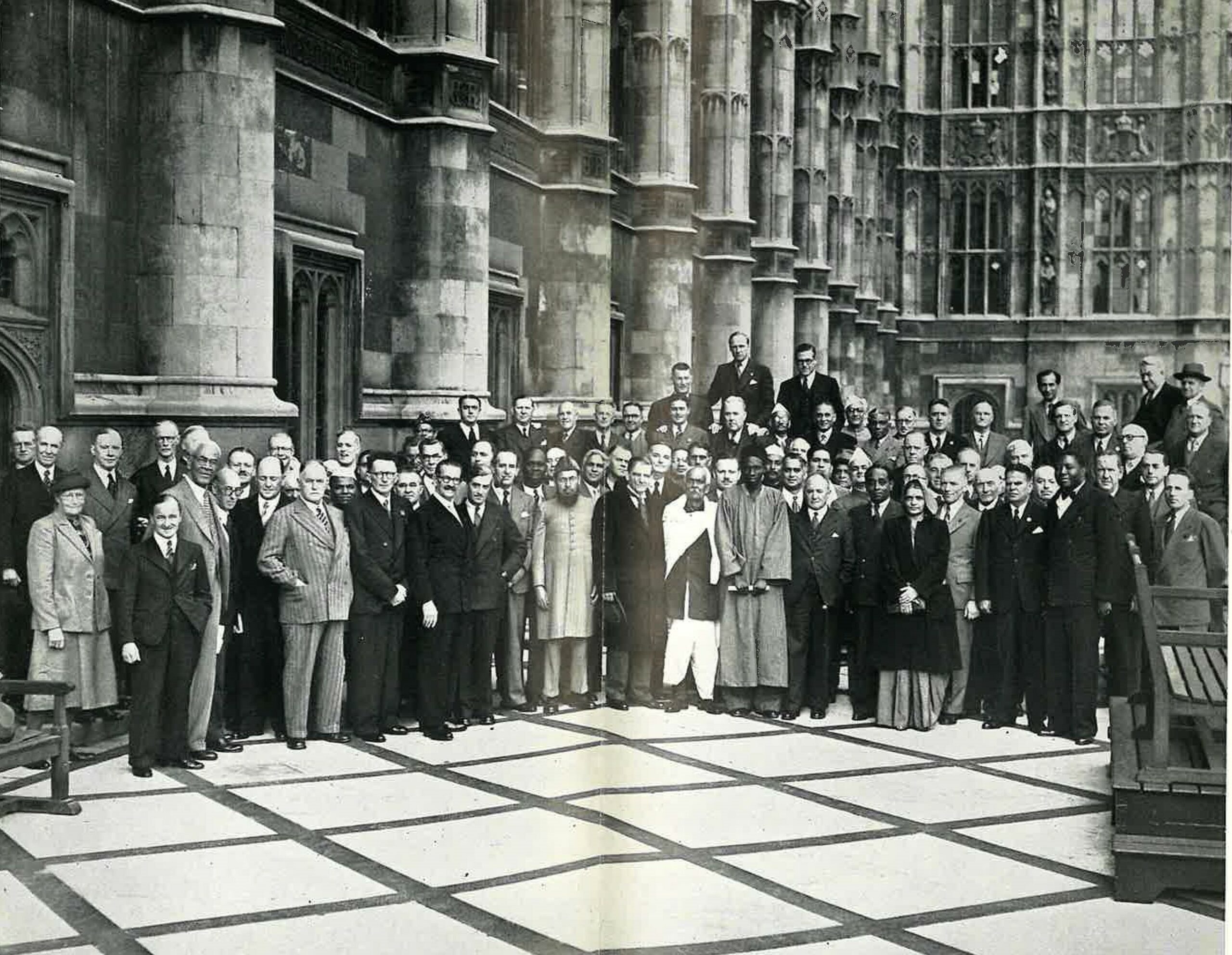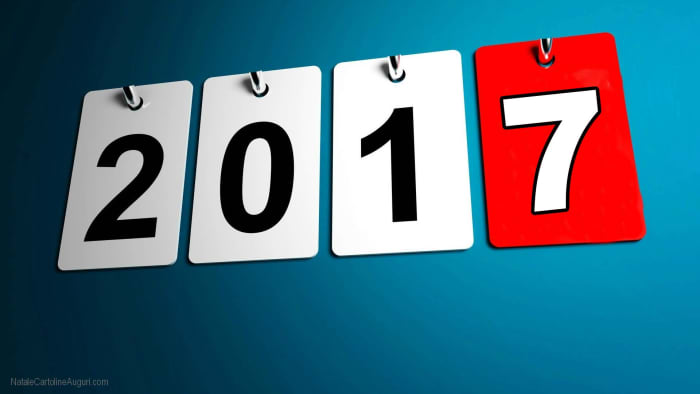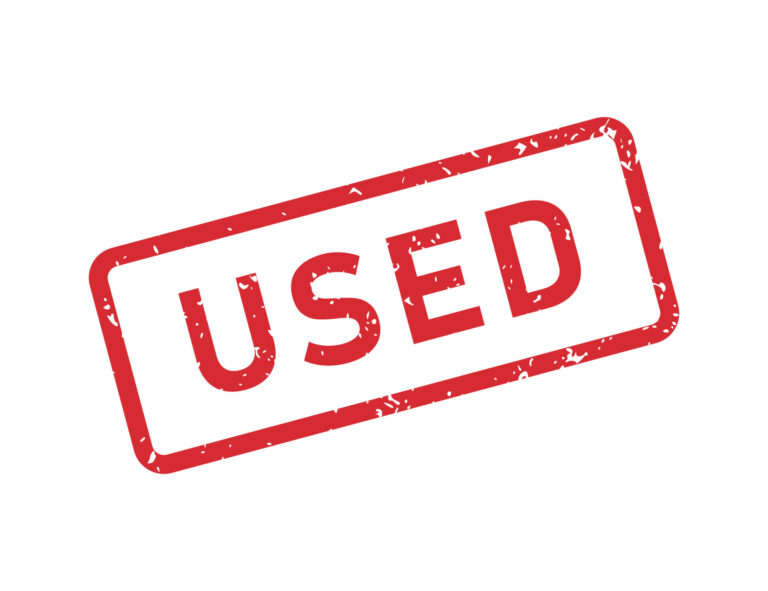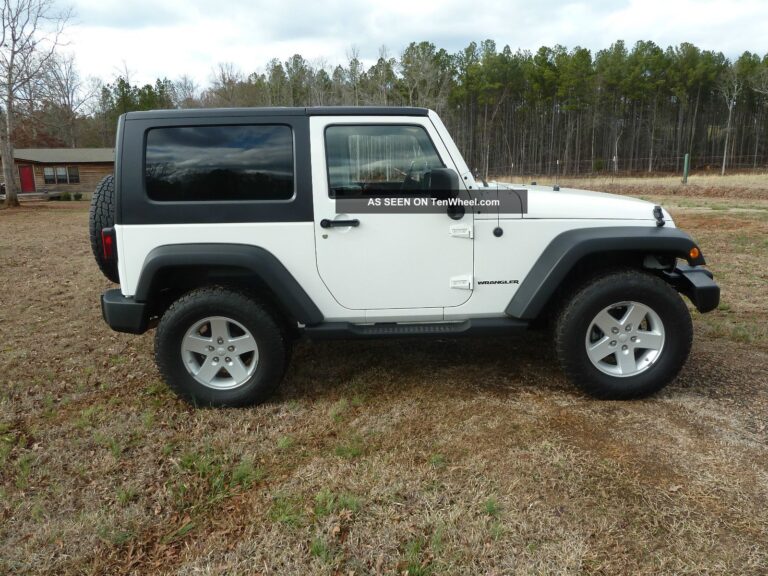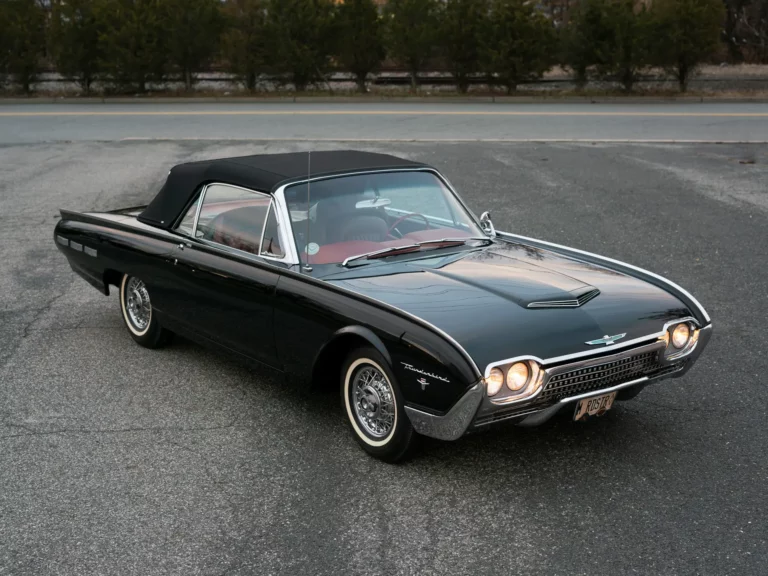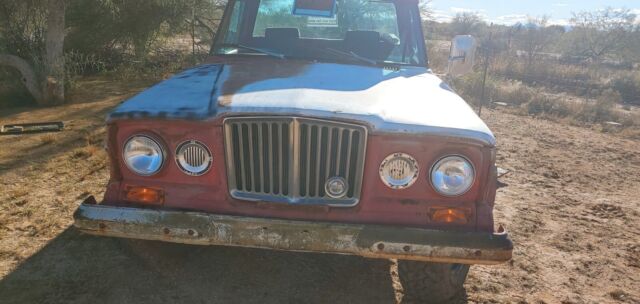1948 Jeep For Sale: A Comprehensive Guide to Acquiring a Piece of American History
1948 Jeep For Sale: A Comprehensive Guide to Acquiring a Piece of American History jeeps.truckstrend.com
The rumble of an old engine, the distinctive silhouette, and the sheer rugged simplicity – these are the hallmarks of a 1948 Jeep. More than just a vehicle, the 1948 Jeep, primarily the Willys-Overland CJ-2A model, represents a pivotal moment in American history. It’s the direct descendant of the legendary military MB, repurposed and refined for civilian life, becoming the iconic workhorse that helped rebuild post-war America. For enthusiasts, collectors, and those simply seeking a tangible connection to a bygone era, finding a "1948 Jeep for sale" isn’t just a transaction; it’s an opportunity to own a piece of automotive heritage, a symbol of freedom, utility, and enduring American ingenuity. This comprehensive guide will navigate the exciting journey of understanding, finding, and acquiring your very own 1948 Jeep.
1948 Jeep For Sale: A Comprehensive Guide to Acquiring a Piece of American History
The Enduring Legacy of the 1948 Jeep CJ-2A
Born from the utilitarian design of its military predecessor, the Willys CJ-2A (Civilian Jeep) began production in 1945, quickly becoming a staple on farms, ranches, and in small businesses across the nation. The 1948 model year, therefore, represents a mature iteration of this initial civilian offering, embodying all the core characteristics that made it an instant legend.
At its heart lies the robust and remarkably reliable "Go-Devil" L-134 flathead four-cylinder engine, producing a modest but mighty 60 horsepower and an abundance of low-end torque. Paired with a sturdy T-90 three-speed manual transmission and the legendary Dana 18 transfer case, providing two-speed high and low range with 4×4 capability, the 1948 Jeep was built to tackle any terrain. Its solid axles (Dana 25 front, Dana 41 rear), leaf spring suspension, and high ground clearance made it an unstoppable force in an era when paved roads were still a luxury in many rural areas.
Distinctive features of the 1948 CJ-2A include a larger tailgate than its military forebear, a side-mounted spare tire, seven-slot grille (a Jeep staple), and an exposed fuel filler cap. Its simplicity of design, ease of maintenance, and the sheer availability of parts (even today) contribute to its enduring appeal. Owning a 1948 Jeep is about experiencing automotive history firsthand – a machine designed for pure function, offering an unadulterated and engaging driving experience unlike anything modern.
What to Look For When Buying a 1948 Jeep CJ-2A
Embarking on the quest for a 1948 Jeep requires a keen eye and a clear understanding of what you’re getting into. These vehicles are over 75 years old, and their condition can vary wildly. Categorizing potential purchases can help set expectations and budgets:
- Concours/Show Quality: These are meticulously restored vehicles, often exceeding original factory specifications in finish and detail. They command the highest prices and are typically trailered to shows rather than driven extensively.
- Restored Driver: A high-quality restoration that is also fully functional and regularly driven. These Jeeps look excellent but are built to be enjoyed on the road or light trails.
- Original Survivor: A rare gem. This Jeep retains most of its original components, paint, and patina. It might show its age but is mechanically sound and offers a unique glimpse into the past without heavy restoration.
- Project Vehicle: The most common and often the most affordable category. These Jeeps typically require significant mechanical, body, and electrical work. They might be non-running, have extensive rust, or be incomplete. They are ideal for the enthusiast with time, skills, and a budget for restoration.

Key Inspection Points During Your Search:
- Frame: The backbone of the Jeep. Look for rust, cracks, bends, or amateur welds. Pay close attention to areas around spring hangers and body mounts.
- Body: Rust is the primary enemy. Check the floorboards, hat channels (underneath the floor), toolboxes, fenders, and the rear body tub. Look for signs of bondo (body filler) or poor repair work.
- Engine & Drivetrain:

- Engine (L-134 Go-Devil): Check for excessive oil leaks, unusual noises, and proper compression (a compression test is highly recommended).
- Transmission (T-90): Listen for grinding, especially when shifting. Check for proper engagement in all gears.
- Transfer Case (Dana 18): Ensure it shifts smoothly into 2WD, 4WD High, and 4WD Low. Look for leaks.
- Axles (Dana 25/41): Check for leaks around the differential covers and wheel hubs.
- Electrical System: Original 1948 Jeeps used a 6-volt system. Many have been converted to 12-volt for easier starting and accessory compatibility. Understand which system is in place and check for frayed wires, non-functional lights, or previous shoddy wiring jobs.
- Brakes, Steering, & Suspension: Inspect brake lines, wheel cylinders, and master cylinder for leaks. Check for excessive play in the steering wheel. Look at the condition of leaf springs, shocks (if present), and shackle bushings.
- Originality: While not critical for a driver, if you’re seeking a collector’s item, research what components (engine, transmission, axles) were original to the 1948 model year. Look for the serial number on the frame and firewall.
- Documentation: A clear title is paramount. Any service records, previous owner history, or restoration documentation adds significant value and peace of mind.
Where to Find a 1948 Jeep For Sale
The search for a vintage Jeep can be as rewarding as the ownership itself. Here are the most common avenues:
- Online Marketplaces:
- eBay Motors: A wide variety of conditions, from projects to fully restored. Be cautious and always request detailed photos and information.
- Craigslist/Facebook Marketplace: Great for local finds. Often, you’ll find more project-level vehicles here. Be prepared to travel.
- Specialized Classic Car Sites: Hemmings.com, ClassicCars.com, Autotrader Classics. These platforms often list higher-quality vehicles and restorations.
- Dedicated Forums and Clubs: Websites like "The CJ-2A Page" (cj2a.com), G503.com (for military Jeeps, but many civilian owners participate), and various Willys/Jeep forums are invaluable resources. Members often sell their vehicles, and you can tap into a wealth of knowledge for pre-purchase advice.
- Classic Car Auctions: For higher-end, professionally restored 1948 Jeeps, major auction houses like Mecum Auctions or Barrett-Jackson occasionally feature them.
- Local Classifieds & Word-of-Mouth: Sometimes the best deals are found through community bulletin boards, local mechanic shops, or simply by asking around at car shows.
- Classic Car Dealerships: Some dealerships specialize in vintage vehicles. While they might have a higher markup, they often offer inspected vehicles and potentially some form of warranty.
Understanding the Cost: Factors Influencing 1948 Jeep Prices
The price of a 1948 Jeep CJ-2A can fluctuate wildly based on several critical factors. Budgeting for your purchase requires understanding these variables:
- Condition: As outlined above, this is the single biggest determinant of price. A non-running rust bucket will be a fraction of the cost of a concourse-level restoration.
- Originality vs. Modifications: Highly original, unmolested examples often fetch a premium, especially if they are well-preserved. However, some buyers prefer tastefully modified Jeeps (e.g., 12V conversion, power steering, disc brakes) for modern drivability, which can also increase value if done professionally.
- Rust: Rust remediation is labor-intensive and expensive. A Jeep with minimal rust is always more valuable, even if it needs other mechanical work.
- Completeness: Missing major components (engine, transmission, axles) or even smaller, hard-to-find parts can add significantly to restoration costs, thus reducing the initial purchase price.
- Geographic Location: Prices can vary by region depending on local demand and supply.
- Market Demand: While generally stable, the classic vehicle market can see fluctuations.
Here’s an estimated price guide for a 1948 Willys CJ-2A, but remember these are ranges and actual prices depend heavily on specific vehicle condition and market dynamics:
| Condition Category | Estimated Price Range (USD) | Key Characteristics |
|---|---|---|
| Project Vehicle | $3,000 – $8,000 | Non-running or barely running, significant rust, missing parts, needs full mechanical and body restoration. |
| Fair / Driver Quality | $8,000 – $15,000 | Running but needs mechanical attention, noticeable rust/body damage, functional but not pretty, can be driven locally. |
| Good / Restored Driver | $15,000 – $25,000 | Well-maintained or older restoration, good mechanical condition, minimal rust, presentable for regular driving and local shows. |
| Excellent / Show Quality | $25,000 – $45,000+ | Fresh, high-quality restoration or exceptionally well-preserved original. Near-perfect paint, interior, and mechanicals. Ready for national shows. |
Owning and Maintaining a Vintage 1948 Jeep
Acquiring a 1948 Jeep is just the beginning of the adventure. Owning one is a unique experience that comes with its own set of considerations:
- Parts Availability: Surprisingly good! Due to the CJ-2A’s popularity and the robust aftermarket, many mechanical and body parts are reproduced or can be sourced from specialty vendors. You won’t struggle to find components for the Go-Devil engine or the Dana axles.
- Mechanical Simplicity: These Jeeps are mechanically straightforward. With basic tools and a good service manual, many repairs and maintenance tasks can be done by the owner, making it an excellent vehicle for learning automotive mechanics.
- Common Issues: Be prepared for minor oil leaks (they all do it!), quirks with the 6-volt electrical system (if not converted), and occasional carburetor tuning. These are generally minor annoyances rather than showstoppers.
- Safety Considerations: A 1948 Jeep lacks modern safety features. There are no airbags, seatbelts were optional or non-existent, and braking performance is not comparable to modern vehicles. Drive defensively, anticipate stops, and be aware of your surroundings.
- Insurance: Standard auto insurance policies may not be suitable. Look into specialized classic car insurance, which often offers better coverage for agreed-upon value and lower premiums, especially if you’re not using it as a daily driver.
- Driving Experience: Expect a slow, noisy, and unrefined ride by modern standards. It’s an open-air experience, with direct steering, firm suspension, and limited top speed (around 45-50 mph comfortably). This raw, visceral connection to the road is a huge part of the CJ-2A’s charm.
Practical Advice for Owners:
- Join a Club: Connect with local or online Willys/Jeep clubs. They are invaluable for advice, parts sourcing, and camaraderie.
- Get a Manual: A factory service manual or a good aftermarket repair manual is essential.
- Pre-Purchase Inspection (PPI): Even if you’re mechanically inclined, a PPI by a vintage Jeep specialist can uncover hidden issues.
- Budget for the Unexpected: Even with a well-inspected vehicle, things can and will go wrong. Set aside a contingency fund for unforeseen repairs.
- Enjoy It! These Jeeps were built to be used. Don’t be afraid to take it out, explore, and share its history with others.
Conclusion: Embracing the Legacy
The pursuit of a "1948 Jeep for sale" is more than just a search for transportation; it’s an investment in a legend. The Willys CJ-2A stands as a testament to post-war ingenuity, a robust and adaptable vehicle that helped shape an era. Whether you’re seeking a pristine showpiece, a reliable weekend cruiser, or a challenging restoration project, the journey of finding and owning one of these iconic machines is deeply rewarding.
By understanding the vehicle’s history, knowing what to inspect, exploring various marketplaces, and budgeting wisely, you can confidently navigate the path to ownership. While they demand attention and respect for their age, 1948 Jeeps offer an unparalleled connection to automotive history, a sense of rugged freedom, and an endless source of enjoyment. For the right enthusiast, bringing a 1948 Jeep back to life or simply maintaining its timeless appeal is a true labor of love, a connection to a simpler time, and an enduring adventure on wheels.
Frequently Asked Questions (FAQ) about 1948 Jeeps
Q1: Is it hard to find parts for a 1948 Jeep CJ-2A?
A1: Surprisingly, no! Due to the immense popularity and long production run of the CJ series, many mechanical and body parts for the 1948 CJ-2A are readily available from specialty vendors, online retailers, and even general auto parts stores for common items.
Q2: Can a 1948 Jeep be driven daily?
A2: While technically possible, it’s not recommended for most. The 1948 Jeep lacks modern safety features, comfort, and speed. Its top comfortable cruising speed is around 45-50 mph. It’s best suited for recreational driving, local errands, or as a weekend vehicle.
Q3: What’s the typical fuel economy like?
A3: The L-134 Go-Devil engine is not known for its fuel efficiency. You can expect around 15-20 miles per gallon, depending on driving conditions, terrain, and engine tuning.
Q4: Is it safe to drive a 1948 Jeep on modern roads?
A4: Safety features are minimal to non-existent (no airbags, basic brakes, often no seatbelts). Driving requires a heightened sense of awareness, defensive driving techniques, and an understanding of the vehicle’s limitations. Many owners upgrade brakes or add seatbelts for improved safety.
Q5: What’s the main difference between a 1948 CJ-2A and a military Willys MB?
A5: While sharing a common lineage, the CJ-2A introduced several civilian-focused features. Key differences include a larger, drop-down tailgate, a side-mounted spare tire (instead of rear-mounted), a larger fuel tank, a full-floating rear axle (Dana 41 vs. Dana 44), and typically more comfortable seats. The military MB often had blackout lights and specific military features.
Q6: What is the horsepower of a 1948 Jeep’s engine?
A6: The L-134 "Go-Devil" flathead four-cylinder engine in the 1948 CJ-2A produced approximately 60 horsepower at 4,000 RPM and around 105 lb-ft of torque at 2,000 RPM. Its strength lies in its low-end torque and reliability, not raw power.
Q7: Should I buy an original survivor or a restored 1948 Jeep?
A7: This depends on your preference and budget. Original survivors offer unique historical integrity and patina but may require more immediate mechanical attention. Restored Jeeps are often turn-key and visually impressive but come at a higher price and might not have the original "soul" some collectors seek. Consider your intended use and comfort level with potential projects.
